DG O'Neill
Breed and conformational predispositions for prolapsed nictitating membrane gland (PNMG) in dogs in the UK: A VetCompass study
O'Neill, DG; Yahui, Yin; Yin, YH; Pont, RT; Brodbelt, DC; Church, DB; Pegram, C; Minn, Mustikka; Mustikka, M
Authors
Yin Yahui
YH Yin
RT Pont
DC Brodbelt
DB Church
C Pegram
Mustikka Minn
M Mustikka
Abstract
Background Prolapsed nictitating membrane gland (PNMG) is the most common disorder of the third eyelid in dogs. However, the epidemiology of PNMG in the wider dog population remains understudied. Methods Using de-identified clinical data from the VetCompass Programme, this cohort study aimed to report the prevalence, demographic and breed-related risk factors of PNMG in dogs attending UK primary care veterinary practices in 2016. Results There were 1,802 PNMG cases identified from 905,543 dogs, yielding an annual prevalence of 0.20% (95% confidence interval (CI) 0.19-0.21). The median age at first diagnosis was 0.63 years (IQR 0.33-1.98, range 0.11-18.00). Dogs aged under 1 year had 10.82 times the odds (95% CI 9.17-12.76) compared with dogs aged from 2 to under 4 years. Neutered animals had higher odds than entire animals within both sexes. Breeds with the highest odds of PNMG compared with crossbred dogs included Neapolitan Mastiff (odds ratio (OR) 34.26, 95%CI 15.92-73.75), English Bulldog (OR 24.08, 95% CI 20.62-28.13), Cane Corso (OR 14.66, 95% CI 8.18-26.28), Lhasa Apso (OR 12.37, 95% CI 10.26-14.92) and American Cocker Spaniel (OR 11.57, 95% CI 5.59-23.96). Purebred dogs had 1.43 times the odds (95% CI 1.26-1.63) of PNMG compared with crossbreed dogs. Breeds with brachycephalic skull conformation had 6.71 times the odds (95%CI 5.89-7.64) compared with breeds with mesocephalic skull conformation. Insured dogs had 1.89 times the odds (95% CI 1.65-2.16) compared with uninsured dogs. Conclusions This study reports the largest cohort of primary-care PNMG cases assembled to date. The results showing young age at diagnosis along with the breed, purebred and brachycephalic skull conformation predispositions suggest a hereditary involvement in PNMG development. These results may help to guide breeding strategies to reduce the prevalence of PNMG and improve welfare in predisposed individuals.
Citation
O'Neill, D., Yahui, Y., Yin, Y., Pont, R., Brodbelt, D., Church, D., Pegram, C., Minn, M., & Mustikka, M. (2022). Breed and conformational predispositions for prolapsed nictitating membrane gland (PNMG) in dogs in the UK: A VetCompass study. PLoS ONE, 17(1), https://doi.org/10.1371/journal.pone.0260538
| Journal Article Type | Article |
|---|---|
| Acceptance Date | Jan 6, 2022 |
| Online Publication Date | Jan 26, 2022 |
| Publication Date | Jan 26, 2022 |
| Deposit Date | Apr 4, 2021 |
| Publicly Available Date | Jan 27, 2022 |
| Journal | PLOS ONE |
| Electronic ISSN | 1932-6203 |
| Publisher | Public Library of Science |
| Peer Reviewed | Peer Reviewed |
| Volume | 17 |
| Issue | 1 |
| DOI | https://doi.org/10.1371/journal.pone.0260538 |
| Keywords | 3RD EYELID GLAND; ORBITAL RIM ANCHORAGE; SURGICAL REPLACEMENT; POCKET TECHNIQUE; ANATOMY |
| Public URL | https://rvc-repository.worktribe.com/output/1548163 |
| Publisher URL | https://journals.plos.org/plosone/article?id=10.1371/journal.pone.0260538 |
Files
OA
(1.6 Mb)
PDF
Publisher Licence URL
http://creativecommons.org/licenses/by/4.0/
You might also like
Conformation-associated health in pet rabbits in the UK: A VetCompass cohort study
(2024)
Journal Article
Epidemiology of heat-related illness in dogs under UK emergency veterinary care in 2022
(2024)
Journal Article
Life tables of annual life expectancy and risk factors for mortality in cats in the UK
(2024)
Journal Article
Downloadable Citations
About RVC Repository
Administrator e-mail: publicationsrepos@rvc.ac.uk
This application uses the following open-source libraries:
SheetJS Community Edition
Apache License Version 2.0 (http://www.apache.org/licenses/)
PDF.js
Apache License Version 2.0 (http://www.apache.org/licenses/)
Font Awesome
SIL OFL 1.1 (http://scripts.sil.org/OFL)
MIT License (http://opensource.org/licenses/mit-license.html)
CC BY 3.0 ( http://creativecommons.org/licenses/by/3.0/)
Powered by Worktribe © 2025
Advanced Search
